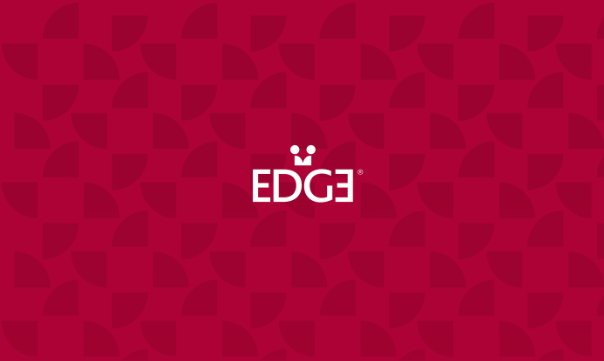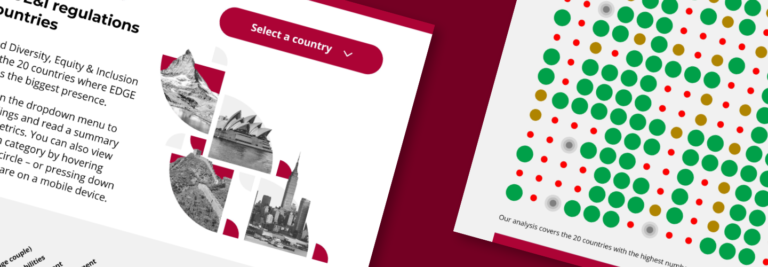In Europe, mandated reporting and other compliance requirements have helped to put DE&I on the priority list for organizations. There are varying levels of progress across the continent, but in general, there is a strong desire for forward movement in closing the gender pay gap. Most use the mean or median distribution of men’s and women’s pay. But In July 2020, Switzerland’s revised Federal Act on Gender Equality came into force, and with it, some of the most stringent analysis, auditing, and communication requirements of all. Companies with over 100 employees are obliged to assess the unexplained gender pay gap using the more sophisticated statistical model, namely an ordinary least squares (OLS) regression analysis. Whilst many companies may worry whether their current gender pay gap is compliant with Swiss requirements, those using the EDGE Certification have little cause for concern.
How Swiss Regulation is Changing the DE&I Landscape
The rationale for the Swiss government to introduce such a stringent approach was that the average pay gap between men and women working in the private sector both in Switzerland and across the OECD was found to be around 18%. When the Swiss government looked at the reasons for the gap in equal pay, they found up to 8% of that pay gap couldn’t be justified by objective, relevant, and non-discriminatory factors such as tenure, age, level of responsibility, type of performed function, or work-time percentage. It decided to try and hold companies accountable for the unexplained pay gap and incentivize achieving more equality in pay by setting a tolerance threshold of 5%.
The process of measuring the unexplained pay gap is now defined by Swiss law. It comprises three phases spanning three consecutive years: first, to complete a legally and scientifically compliant equal pay analysis, such as EDGE’s Certification methodology; second, to have the results of the analysis verified by an independent, authorized body; and third, to communicate the results to employees for non-public organizations, or to employees and shareholders for public listed companies.
If, at the end of this process, a company’s unexplained gender pay gap remains higher than 5%, the regression analysis has to be conducted every four years until the pay gap falls below this threshold. However, if the 5% threshold is reached, the company doesn’t have to do anything else until 2032, when the legislation will be reviewed again.
The EDGE methodology uses the same 5% tolerance threshold. So, the good news for EDGE-certifying organizations is that an EDGE Certification-compliant pay equity analysis supports their compliance with Swiss regulation. These companies are already being guided towards achieving that threshold, assuming they haven’t achieved it already.
Stage 1 The Pay Equity Analysis
All companies in Switzerland with 100 or more employees must conduct an unexplained gender pay gap analysis. The EDGE Certification methodology similarly requires at least 100 employees to be included in its pay equity analysis to ensure sufficient statistical power to achieve a credible result so it aligns with the regulations.
In addition, EDGE’s Unexplained Gender Pay Gap Analysis Methodology has been assessed by The Economic departments of five top Swiss Universities, which all attest that its methodology is scientifically rigorous and legally compliant. The fact that all employees’ base salary, bonuses, and other cash benefits are analyzed at pro-rated, full-time equivalent rates during the assessment period is also in line with Swiss law.
To help organizations perform the pay equity analysis in accordance with the regulation, the Swiss government provides a free web-based tool for conducting equal pay analyses called Logib.
It is important to stress that whilst Logib is the government’s proposed tool for conducting equal pay analyses, it is not mandated as such. The government recognizes that other equal pay methods are already in use in the country, and these methods can continue to be used, assuming they enable compliance with Swiss law and are independently validated by a recognized authority.
Stage 2 Auditing the Data
The second part of the process requires an independent third-party and accredited auditor to verify the pay equity analysis. EDGE has facilitated that process for clients preparing for EDGE Certification by working with a trained and accredited financial auditor. This firm reviews the pay equity analysis alongside the three approved Certification Bodies of the EDGE Certification system and then provides the company with the required management letter and reporting.
Stage 3 Communicating the Results
The third step of the process requires an organization to communicate the outcome of the pay gap analysis to its employees and, if it is a listed company, also to its investors via its annual reporting process. The regulation does not prescribe the depth and breadth of the required communication, but, whatever the company decides to say to its employees and/or its investors, the integrity and quality of the data are confirmed by third-party verification. That not only reassures employees and investors, it also provides confidence to an organization’s leadership team. Attaining EDGE Certification provides organizations with a valuable and robust communications tool to support their commitment to pay and overall gender equity in the workplace.
Future-proofing Your Organization Against Future Regulatory Change
With the increasing regulatory pressure in Switzerland and the rest of the EU, combined with the increased transparency regulations in the US, compliance in the area of DE&I is unavoidable. Regulatory requirements in the EU are getting increasingly sophisticated, from the very quantitative to the more qualitative, from the outcomes to the processes. Ignoring these changes will mean being confronted with the fines associated with non-compliance and the negative impact on the reputational value of being the organization at the back of the crowd!
But at EDGE, we know that organizations need more resources to meet all the different requirements, now and those coming in the future. EDGE is at the forefront of compliance with these emerging DE&I regulations and is helping companies to navigate the change. EDGE is streamlining and creating efficiencies by ensuring the methodology and solutions can be verified by independent third parties. Such a holistic approach is necessary to future-proof organizations against regulatory changes. Enabling companies to comply easily with the revised Federal Act on Gender Equality and its strict requirements to help reduce the current estimated unexplained 8% gender pay gap in Switzerland is just one example of how EDGE is doing that.
No matter what new regulation may be just around the corner, EDGE Certification can play a crucial role in helping organizations to stay compliant, stay committed, and drive Real. World. Change.



